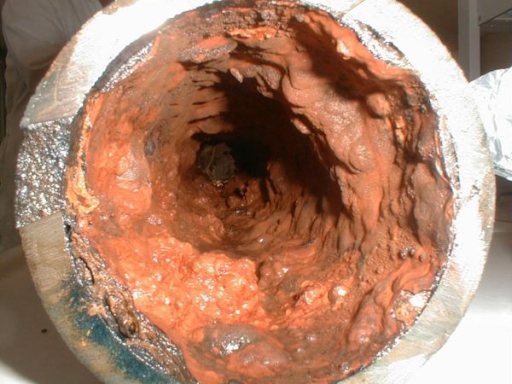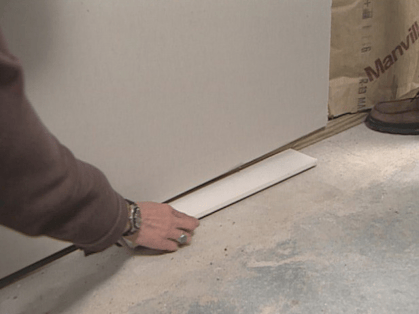
A topic of interest for safety officers, facility managers and infection preventionists is water safety in healthcare. There are routine aspects of water safety that are addressed in each facility’s required water management plan. The CDC has a Healthcare Facility Water Management Program Checklist that goes over the basics. However, there are unique opportunities during construction or renovation to reduce the risk of waterborne pathogens and mold with careful design and commissioning considerations. The CDC offers a Water Infection Control Risk Assessment tool (WICRA) that can be used to assess risk based on water sources, design considerations, and patient populations served in the area. This tool can be used at any time, but may be especially helpful when planning construction or renovations. Some of the key considerations are highlighted below.
Design of Plumbing System
The design of water systems can impact the risk of pathogens in the system. There are unique ecosystems within the pipes and fittings of water systems. In the United States, there’s a focus on Legionella, but the principles of water safety may also impact other waterborne pathogens including Pseudomonas and Acinetobacter. Careful design can help mitigate water related infection risks. The design of the plumbing is beyond the scope of this post, but it can be helpful to understand some basic principles. The goals of good plumbing are to have enough water on demand for any patient or staff member who needs it, to prevent scalding, and to avoid having excess capacity where the water stagnates in pipes and doesn’t maintain appropriate temperatures. During the design of new or renovated spaces, it’s an opportunity to remove unneeded plumbing, or strategically place valves for future growth of services (such as putting in dialysis boxes). This allows for future growth or changes in services without having excess capacity and water stagnation based on current usage.
 Cross section of pipe showing biofilm
Cross section of pipe showing biofilm
Choice of Plumbing Fixtures
The ideal of saving water is sometimes in conflict with keeping good flow to prevent stagnation and contamination. An example of energy-saving devices that can cause trouble are hands-free sinks.
Although they can help reduce water waste, and prevent the user from touching dirty faucets after cleaning their hands, there can be problems with these devices. A 2012 study showed that water from electric eye faucets was more contaminated with Legionella bacteria than traditional faucets and that all internal parts of the electronic faucets were contaminated by Legionella. The authors hypothesized that the plastic parts of the electronic faucets were more prone to biofilms than the brass parts of traditional faucets. A study of Legionella contamination of sensor controlled surgical sinks showed contamination related to thermal mixing valves. Newer sensor controlled faucets advertise Legionella prevention with automated flush settings to prevent water stagnation. However, it’s not clear whether these claims are backed by research. It’s important to ask about the materials used and legionella prevention features of your specific model of faucets.
Protection From Splashes and Aerosols
An important design consideration is the ability to protect patients and supplies from the germs in biofilms inside sinks, toilets and drains. These fixtures are home to many varieties of microorganisms that can be spread through splash contamination or aerosolization. One way to protect patients is by designing spaces with adequate distance between sinks and clean storage. Splash guards can also reduce the risk of splash contamination. Toilets without lids, and sprayers to clean bedpans can also promote splash and aerosol contamination. These should be avoided where possible. Pay attention to faucet and shower aerators as well as dental irrigation systems as these may contribute to pathogenic aerosols. Finally, Legionella outbreaks have been associated with spas, hot tubs and decorative fountains. These are not appropriate for most healthcare settings. The healing effect of water can be created with light and sound rather than actual water features that can create an infection risk.

Bedpan management: Those on the right offer greater protection from splashes and aerosols
Protection From Mold
A simple and very practical consideration during construction is the height of sheetrock. Because water leaks, spills or floods are inevitable, a smart strategy is to install sheetrock about ½ inch above the floor. This can’t be done after the fact, so the renovation or construction period offers a unique opportunity. Carpenters can either work from the top down, placing sheetrock tight to the ceiling, and having the extra space at the bottom, or they can place spacers under the sheetrock to get it to a consistent height, then screw sheetrock into the studs as usual. By doing this, there is space for leaks or spills on the floor before the bottom of the sheetrock gets wet. This can reduce the risk of mold after water events and will save a lot of time and effort trying to dry sheetrock after a flood. Cove molding will hide the gap from view, so there is little downside to this elevation trick.

Sheetrock installed about ½” above the floor can protect from moisture wicking up after leaks or floods
Commissioning or Re-commissioning
New construction with new pipes should not present a risk for Legionella or other pathogens. However, if the new area connects to existing plumbing where water has stagnated, there can be a risk. When existing plumbing is not used for a while and then is re-commissioned, care must be taken to assure the water is safe for use.
The key problem is biofilm and biofilm disruption. Biofilms are the layers of bacteria that adhere to the inner surfaces of pipes. Many types of pathogenic bacteria can create biofilms. Biofilms provide a complex ecology for the bacteria, including a source of food and protection from fluctuations in temperature and other environmental conditions. In some cases, the biofilm develops the ability to adhere to the pipe and to flow directionally with the water – sort of like a flag blowing in the wind. The problems then come when the bacteria exit the biofilm matrix and float freely in the water and out of showers and faucets.

Illustration Credit: B. Hayes/National Institute of Standards and Technology
When the water is turned off, the flowing parts of biofilm collapse back onto the slime layer in the pipe. The slime layer itself may dry out if water is off for a prolonged period of time. Then when the water is turned back on, the sudden pressure can disburse some of these dried out particles from the biofilm and into the flowing water. The free-floating bacteria can cause problems if breathed, ingested or aspirated by susceptible individuals. To prevent infections related to water restoration, it’s important to have a plan. Depending on the patient population and use of the area, water treatment and testing may be appropriate. Some options are to super heat and flush the water coming in through the renovated space, or to treat with chlorine, or if there is already a water treatment modality for the system, to run that for a period of time; then, based on local requirements and on the type of patients being served, testing for Legionella or other organisms may be required prior to opening the area.
Taken together, the design of the plumbing, facility, and attention to water quality prior to commissioning a newly built or renovated area can help start patients off safely. The water management plan for ongoing testing and treatment will help keep them safe in the long run. If you are interested in learning more, check out the CDC web page Reducing Risk from Water.
Dr. Haas is Principal Consulting Epidemiologist at Innovative Infection Prevention and an associate editor of the American Journal of Infection Control (AJIC). Dr. Haas previously served as Director of Epidemiology at 3 academic medical centers, and as 2018 APIC President. Prior to beginning her nursing and infection prevention professional journey, Dr. Haas also worked as a Journeyman Millwright Mechanic and was a member of the Carpenter’s Union.
Interested in More Information on STARC Systems?
